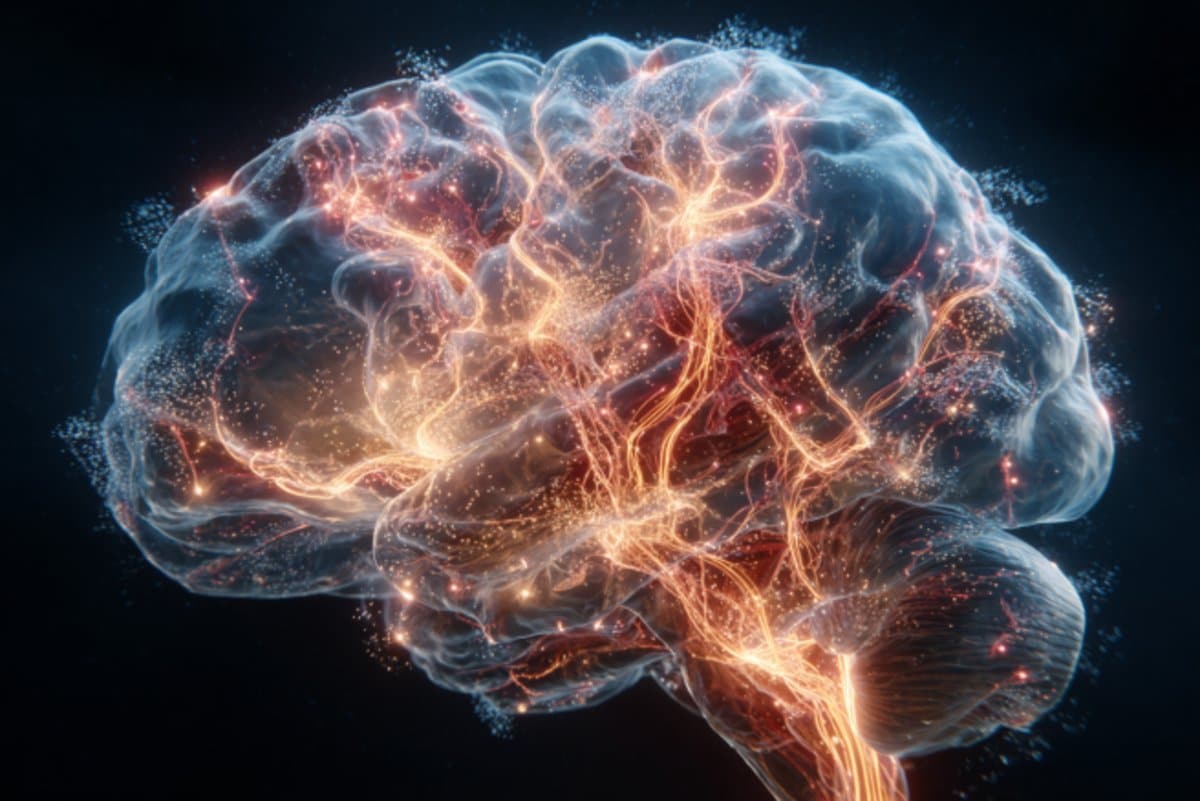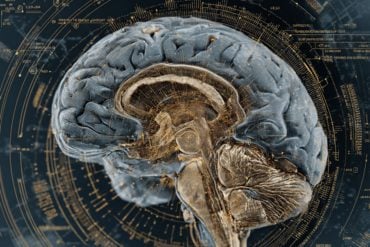Summary: Researchers have developed the most detailed molecular map yet of how the brain develops and reacts to inflammation, revealing that disease processes can “reawaken” genes from early life. Using a new spatial tri-omics technique, the team tracked how gene activity, epigenetic changes, and protein production interact in specific brain regions.
They found that inflammation spreads beyond damaged areas and reactivates developmental programs involved in myelination—the process disrupted in multiple sclerosis. This discovery sheds light on how inflammation communicates across the brain and could lead to new approaches for treating neurodegenerative and demyelinating diseases.
Key Facts
- Tri-Omics Innovation: The new technique maps gene activity, epigenetics, and protein production in precise brain regions simultaneously.
- Inflammation Spread: Immune activity in one brain area can trigger molecular changes in distant, undamaged regions.
- MS Insight: Inflammation reactivates developmental gene programs, offering clues to myelin loss in multiple sclerosis.
Source: Karolinska Institute
Researchers at Karolinska Institutet and Yale University have created a multidimensional, molecular map of how the mouse brain develops after birth and how it reacts to inflammation.
The study, which is published in Nature, shows that some of the molecular programmes that govern brain development can be reactivated in the brain during inflammation.

Brain development is a complex process involving, for example, the precise diversification and distribution of cells into distinct areas. The researchers behind the present study have developed a new method called spatial tri-omics, that enables them to simultaneously measure in a specific area of the brain: 1) the activity of genes, 2) how this activity is regulated by epigenetic changes, and 3) if this activity ultimately leads to the production of proteins.
The study is based on analyses of mouse and human brains at different stages of development.
“We’ve been able to use this multidimensional method to track brain development over time and map changes from birth to a young age in different parts of the brain, as well as study how the brain reacts to inflammation,” explains Gonçalo Castelo-Branco, professor at the Department of Medical Biochemistry and Biophysics at Karolinska Institutet, Sweden.
Inflammation spreads through the brain
Myelination is the process that provides nerve cells with a protective sheath of insulating myelin that ensures the quick and effective transmission of nerve signals. An area of the brain with abundant myelination is the corpus callosum, which is affected by neurological diseases like multiple sclerosis, MS, where myelin and oligodendrocytes (the myelin-producing cells) are attacked by the immune system.
Using a mouse model that disrupts myelination in specific areas in the brain, the researchers found that the brain’s immune cells, microglia, are activated not only locally as a response to damage, but also at remote sites of the brain.
“We were surprised to see that inflammation can spread to other parts of the brain, even when there’s no direct damage there,” says Rong Fan, professor at Yale University, USA, who led the study with Professor Castelo-Branco.
“This suggests that in the event of disease, the brain has a complex means of communication between its different areas.”
Of possible significance to MS
One important finding was that genetic programmes that are activated during brain development can be reactivated in neuroinflammation.
“This is interesting as it can give us clues as to how and why the myelin is broken down by diseases like MS,” says Professor Castelo-Branco.
“We found that inflammation in the brain can spread and affect areas far from the original locus of damage, which could give insights into how MS develops and provide us with new tools for treating the disease.”
Postdoctoral fellows Di Zhang and Leslie Kirby at Yale University and Karolinska Institutet, respectively, are co-first authors of the paper.
Funding: The study was financed by several funding agencies, including the Swedish Research Council, the Swedish Brain Foundation, the Knut and Alice Wallenberg Foundation, the EU’s Horizon Europe programme and the National Institutes of Health (USA). Gonçalo Castelo-Branco holds shares in Nexus Epigenomics. Rong Fan is a founder of and advisor to IsoPlexis, Singleron Biotechnologies and AtlasXomics.
Key Questions Answered:
A: Researchers built a multidimensional molecular map showing how the brain develops after birth and how it responds to inflammation, using a new method called spatial tri-omics.
A: It simultaneously measures three key molecular layers in specific brain regions—gene activity, epigenetic regulation, and resulting protein production—giving an integrated view of how brain cells function and communicate.
A: Inflammation can spread across brain regions and reactivate genetic programs normally used during early brain development, offering insights into diseases like multiple sclerosis (MS).
About this brain mapping, genetics, and inflammation research news
Author: Press Office
Source: Karolinska Institute
Contact: Press Office – Karolinska Institute
Image: The image is credited to Neuroscience News
Original Research: Open access.
“Spatial dynamics of brain development and neuroinflammation” by Gonçalo Castelo-Branco et al. Nature
Abstract
Spatial dynamics of brain development and neuroinflammation
The ability to spatially map multiple layers of omics information across developmental timepoints enables exploration of the mechanisms driving brain development, differentiation, arealization and disease-related alterations.
Here we used spatial tri-omic sequencing, including spatial ATAC–RNA–protein sequencing and spatial CUT&Tag–RNA–protein sequencing, alongside multiplexed immunofluorescence imaging (co-detection by indexinng (CODEX)) to map dynamic spatial remodelling during brain development and neuroinflammation.
We generated a spatiotemporal tri-omic atlas of the mouse brain from postnatal day 0 (P0) to P21 and compared corresponding regions with the human developing brain. In the cortex, we identified temporal persistence and spatial spreading of chromatin accessibility for a subset of layer-defining transcription factors.
In the corpus callosum, we observed dynamic chromatin priming of myelin genes across subregions and identified a role for layer-specific projection neurons in coordinating axonogenesis and myelination.
In a lysolecithin neuroinflammation mouse model, we detected molecular programs shared with developmental processes. Microglia exhibited both conserved and distinct programs for inflammation and resolution, with transient activation observed not only at the lesion core but also at distal locations.
Overall, this study reveals common and differential mechanisms underlying brain development and neuroinflammation, providing a rich resource for investigating brain development, function and disease.






